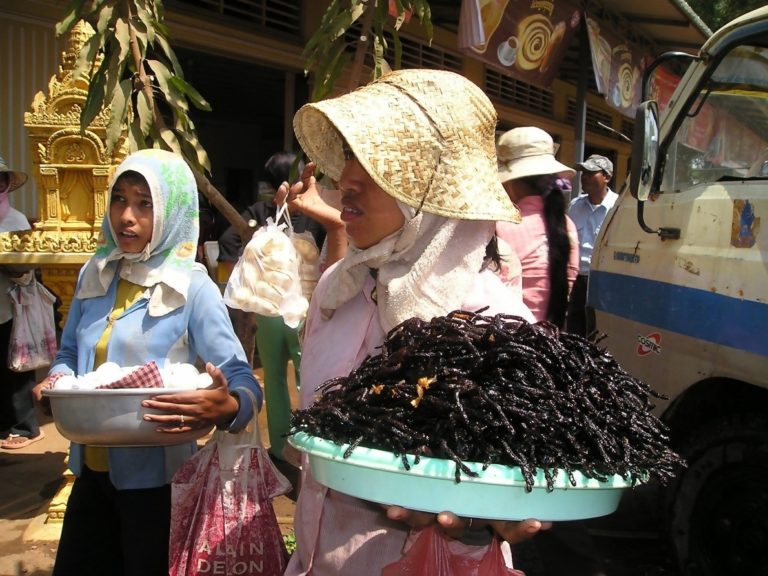
The saying goes that bad things come in threes. But for this article on Cambodian food, we aren’t concerned with bad things. Not at all. Instead, we’re focusing in on the strange custom of eating a creature that has eight legs. For Cambodians, this tradition is a good thing. And that creature would be the tarantula.
To Western taste buds, this meal choice might be met with disdain, or more likely, met with fear. Spiders are a thing of terror to most people, no matter where you are in the world. Tons of people are self-proclaimed arachnophobes. And on top of that, it’s hard to imagine taking the creature of your nightmares and frying it up as a crispy snack.

But for the people of Cambodia, the fried tarantula is something of a delicacy, served anywhere from street vendors to dishes in restaurants.
For me, the idea of trying this snack is close to mortifying. I don’t know what it is about spiders, really, that makes people so creeped out by them. But I am definitely one of the people in that boat. For me, at least, I think my fears have something to do with the fact that tarantulas are slightly hairy. And I don’t think I can get behind eating hairy things unless the hair has been removed before eating. I feel the same way about the idea of eating Ecuadorian cuy – their spit-roasted guinea pig dish. In some cases, they cook the guinea pigs up without totally removing all the hair. And the result – I can only imagine it’s a crispy, gristly combination that I wouldn’t like.
But when it comes to this Cambodian fried tarantula, I’m a little more intrigued. I’m left wondering what there really is to eat, if there’s little meat at all in the things. Apparently, though, people find the crispy-ness of the legs and head most appetizing, with the body often being left untouched. You see, the tarantulas are prepared not too differently from the way we often pan-fry foods like vegetables or meat. It’s often fried up with oil and a touch of garlic. So, the resulting dish is a mix of simple cooking and an extremely bizarre cooking subject.
What’s possibly more important about the tarantula frying industry, though, is not whether they receive excellent reviews for taste or preparation. The real importance of these tarantulas seems to be their impact on the street food industry. For many Asian countries, street food is an industry that locals make their living from. And with rampant tourism, there is no end to what you can sell a visitor for the sheer reason that they want to try. Apparently, the fried tarantulas of Cambodia significantly contribute to the money made by street vendors.
So, how would you feel about taking on this classic dish? Could you get past the fact that you’re eating something you would almost never want to cross paths with? Or would you see it as an opportunity to face your fears – literally – and then eat them? Thrill-seekers may see this food as the perfect opportunity to show off or prove that they aren’t afraid of certain aspects of the natural world. But personally, I think, if you don’t want to try it, you don’t have to. I’m a believer that you can get through your life perfectly well without doing certain scary things just for the sake of trying.
And for me, eating a fried tarantula is one of those things. If I ever make it to Cambodia, I think I’ll stick to eating something milder. Something that isn’t likely to impart nightmares into my sleep.